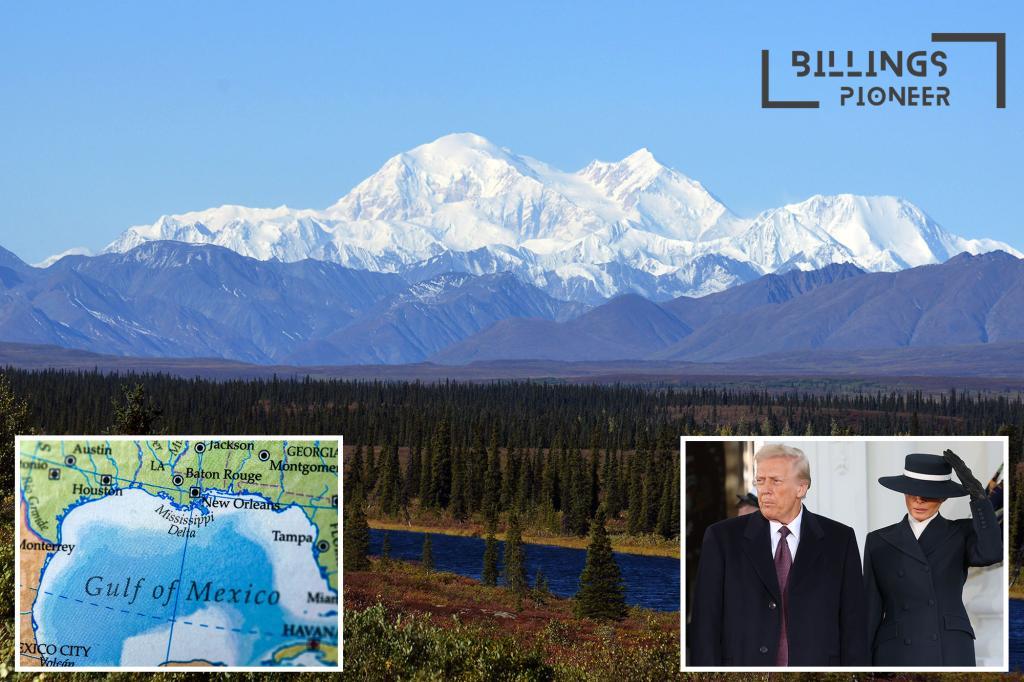In a bold move, President Trump plans to rename the Gulf of Mexico as the “Gulf of America” along with restoring Mount Denali to its former name, Mount McKinley. This announcement is set to be one of his first actions as the 47th president, with the aim of celebrating what he calls “American greatness.” Such significant name changes are part of nearly 200 executive actions Trump is expected to sign on his first day in office, scheduled for later this month.
Renaming the Gulf: A Controversial Decision
During his inaugural address, Trump reiterated his intentions to switch the name of the Gulf of Mexico to the Gulf of America. He argues that this change matters because the U.S. does most of the work in this region, making it fitting to recognize America in its name. Despite these intentions, the impact of this unilateral decision could lead to diplomatic tensions, especially with neighboring countries, as they are not required to adopt the new name.
Why the Name Change Matters
Trump is keen to position both the Gulf of Mexico and Mount McKinley as symbols of American pride and economic significance. The Gulf of Mexico is not only a vital area for energy production and commerce, but it also provides a huge amount of the country’s seafood. By renaming it the Gulf of America, Trump hopes to reinforce this connection and recognize its importance to the U.S. economy.
The Historical Context of Mount McKinley
As part of the name changes, Mount Denali will revert to its previous name, Mount McKinley. This change is particularly controversial because the name Denali, meaning “the high one” in the Koyukon language, honors the indigenous people of Alaska. The renaming back to McKinley, however, represents a different perspective as it aims to acknowledge William McKinley, a notable figure in American history who was assassinated in 1901.
The Process of Name Changes
Under U.S. law, the president has the authority to rename geographic features via executive orders, and such changes will be communicated through federal maps and official documents. The Secretary of the Interior will oversee the implementation of these changes. However, it’s unclear if the new names will be required in schools or other non-federal institutions. This creates questions about how widely these names will actually be adopted.
Reactions to the Announcement
The announcement has met with mixed reactions. While some support the idea of emphasizing American symbols through these names, others, like Senator Lisa Murkowski, oppose the Mount McKinley name change, emphasizing its historical significance to Alaska’s Native people. This opposition highlights the ongoing debate about how names can shape our understanding of history and culture.
The Gulf’s Importance
The Gulf of Mexico is a huge body of water, and it’s the ninth largest in the world, covering around 600,000 square miles. It’s crucial not only for American energy production, but also for tourism and recreation in states like Texas, Louisiana, Mississippi, Alabama, and Florida, all of which border the Gulf. Renaming it could be seen as a way to solidify its importance to the country’s identity.
What’s Next?
Trump is expected to formally sign these executive orders soon after his inauguration. How this will play out on a national and international level remains to be seen, especially considering the Gulf’s vital role in U.S. resources and economy. As discussions continue, it is clear that this proposed name change is about more than just geography. It touches upon themes of nationalism, history, and identity that resonate deeply within the American public.











